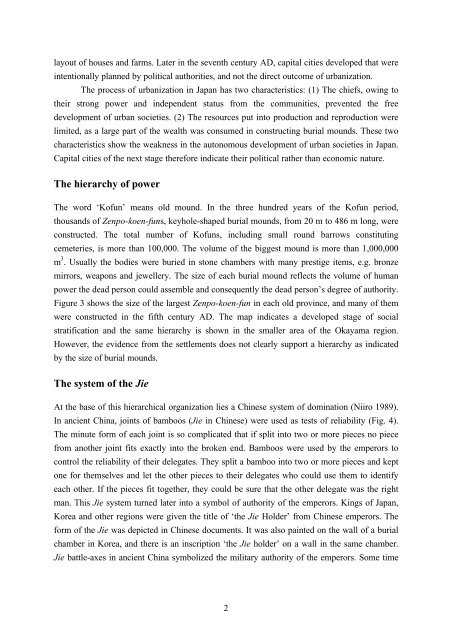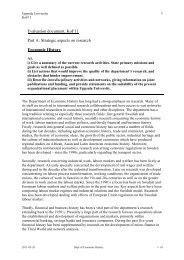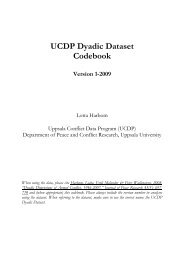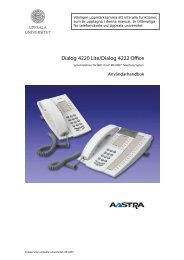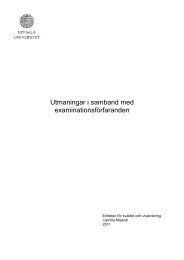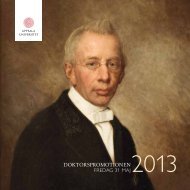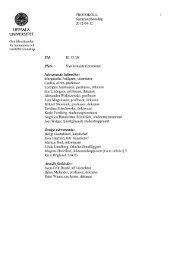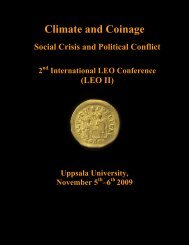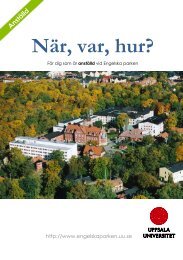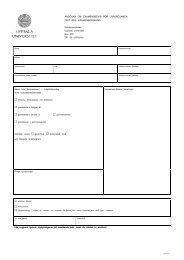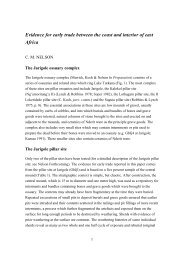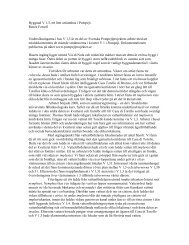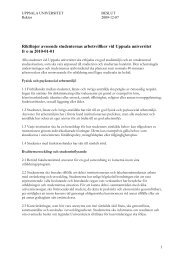The formation of a complex society in Japan.
The formation of a complex society in Japan.
The formation of a complex society in Japan.
Create successful ePaper yourself
Turn your PDF publications into a flip-book with our unique Google optimized e-Paper software.
layout <strong>of</strong> houses and farms. Later <strong>in</strong> the seventh century AD, capital cities developed that were<strong>in</strong>tentionally planned by political authorities, and not the direct outcome <strong>of</strong> urbanization.<strong>The</strong> process <strong>of</strong> urbanization <strong>in</strong> <strong>Japan</strong> has two characteristics: (1) <strong>The</strong> chiefs, ow<strong>in</strong>g totheir strong power and <strong>in</strong>dependent status from the communities, prevented the freedevelopment <strong>of</strong> urban societies. (2) <strong>The</strong> resources put <strong>in</strong>to production and reproduction werelimited, as a large part <strong>of</strong> the wealth was consumed <strong>in</strong> construct<strong>in</strong>g burial mounds. <strong>The</strong>se twocharacteristics show the weakness <strong>in</strong> the autonomous development <strong>of</strong> urban societies <strong>in</strong> <strong>Japan</strong>.Capital cities <strong>of</strong> the next stage therefore <strong>in</strong>dicate their political rather than economic nature.<strong>The</strong> hierarchy <strong>of</strong> power<strong>The</strong> word ‘K<strong>of</strong>un’ means old mound. In the three hundred years <strong>of</strong> the K<strong>of</strong>un period,thousands <strong>of</strong> Zenpo-koen-funs, keyhole-shaped burial mounds, from 20 m to 486 m long, wereconstructed. <strong>The</strong> total number <strong>of</strong> K<strong>of</strong>uns, <strong>in</strong>clud<strong>in</strong>g small round barrows constitut<strong>in</strong>gcemeteries, is more than 100,000. <strong>The</strong> volume <strong>of</strong> the biggest mound is more than 1,000,000m 3 . Usually the bodies were buried <strong>in</strong> stone chambers with many prestige items, e.g. bronzemirrors, weapons and jewellery. <strong>The</strong> size <strong>of</strong> each burial mound reflects the volume <strong>of</strong> humanpower the dead person could assemble and consequently the dead person’s degree <strong>of</strong> authority.Figure 3 shows the size <strong>of</strong> the largest Zenpo-koen-fun <strong>in</strong> each old prov<strong>in</strong>ce, and many <strong>of</strong> themwere constructed <strong>in</strong> the fifth century AD. <strong>The</strong> map <strong>in</strong>dicates a developed stage <strong>of</strong> socialstratification and the same hierarchy is shown <strong>in</strong> the smaller area <strong>of</strong> the Okayama region.However, the evidence from the settlements does not clearly support a hierarchy as <strong>in</strong>dicatedby the size <strong>of</strong> burial mounds.<strong>The</strong> system <strong>of</strong> the JieAt the base <strong>of</strong> this hierarchical organization lies a Ch<strong>in</strong>ese system <strong>of</strong> dom<strong>in</strong>ation (Niiro 1989).In ancient Ch<strong>in</strong>a, jo<strong>in</strong>ts <strong>of</strong> bamboos (Jie <strong>in</strong> Ch<strong>in</strong>ese) were used as tests <strong>of</strong> reliability (Fig. 4).<strong>The</strong> m<strong>in</strong>ute form <strong>of</strong> each jo<strong>in</strong>t is so complicated that if split <strong>in</strong>to two or more pieces no piecefrom another jo<strong>in</strong>t fits exactly <strong>in</strong>to the broken end. Bamboos were used by the emperors tocontrol the reliability <strong>of</strong> their delegates. <strong>The</strong>y split a bamboo <strong>in</strong>to two or more pieces and keptone for themselves and let the other pieces to their delegates who could use them to identifyeach other. If the pieces fit together, they could be sure that the other delegate was the rightman. This Jie system turned later <strong>in</strong>to a symbol <strong>of</strong> authority <strong>of</strong> the emperors. K<strong>in</strong>gs <strong>of</strong> <strong>Japan</strong>,Korea and other regions were given the title <strong>of</strong> ‘the Jie Holder’ from Ch<strong>in</strong>ese emperors. <strong>The</strong>form <strong>of</strong> the Jie was depicted <strong>in</strong> Ch<strong>in</strong>ese documents. It was also pa<strong>in</strong>ted on the wall <strong>of</strong> a burialchamber <strong>in</strong> Korea, and there is an <strong>in</strong>scription ‘the Jie holder’ on a wall <strong>in</strong> the same chamber.Jie battle-axes <strong>in</strong> ancient Ch<strong>in</strong>a symbolized the military authority <strong>of</strong> the emperors. Some time2


